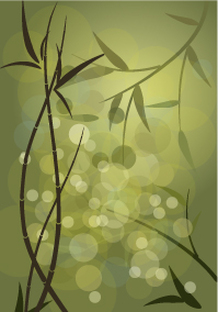How does traditional Chinese medicine work?
The practitioner uniquely focuses on treating the whole entire person, not just a piece or part. Balance
between physical and mental-emotional well being is crucial in establishing harmony in one’s life. TCM
achieves optimal health by restoring balance at the root cause of disease within the body.
between physical and mental-emotional well being is crucial in establishing harmony in one’s life. TCM
achieves optimal health by restoring balance at the root cause of disease within the body.

Practitioners diagnose what is out of balance in a patient’s body by:
A. CHIEF COMPLAINT
(onset, location, duration, characteristics, alleviates, aggravates)
B. (10) QUESTIONS
...that determine the overall health of the person’s bodily systems
1. Body temperature
2. Sweating
3. Head/body
4. Stools/urine
5. Digestion/appetite/taste
6. Thirst
7. Chest/ribs/abdomen
8. Ears/eyes
9. Sleep
10. Gynecology/male urogenital
C. VISUAL INSPECTION
• Tongue (coat quality & body characteristics) most important visual verification of internal organ and physiological health.
• Face (color, shape, markings)
• Body (shape, size, dermatology)
D. PALPATION (TOUCH)
• Pulse (27 basic pulse states)
• Abdomen, hands/feet (temperature)
A. CHIEF COMPLAINT
(onset, location, duration, characteristics, alleviates, aggravates)
B. (10) QUESTIONS
...that determine the overall health of the person’s bodily systems
1. Body temperature
2. Sweating
3. Head/body
4. Stools/urine
5. Digestion/appetite/taste
6. Thirst
7. Chest/ribs/abdomen
8. Ears/eyes
9. Sleep
10. Gynecology/male urogenital
C. VISUAL INSPECTION
• Tongue (coat quality & body characteristics) most important visual verification of internal organ and physiological health.
• Face (color, shape, markings)
• Body (shape, size, dermatology)
D. PALPATION (TOUCH)
• Pulse (27 basic pulse states)
• Abdomen, hands/feet (temperature)
How is harmony restored?
TCM works by reestablishing balance and harmony between the energetics of the organs, blood, fluids,
muscles, skeletal, glands, digestive, respiratory, circulatory and nervous systems.
When a bodily system is too:
• Hot (such as thirst, red face, acne, sensation of heat) treatment is to cool
• Cold (such as clear fluid discharge, pain better with heat, cold limbs) treatment is to warm
• Damp/Phlegm (edema, heaviness of body, foggy head, oozing sores) treatment is to drain/resolve
• Dryness (dry skin, mouth, throat, stools) treatment is to moisten
•Wind (tremors, dizziness, itching, paralysis) treatment is to extinguish
All too often, patients present, not with one textbook pattern, but with a combination of 2, 4
even 5 patterns!
According to the Chinese understanding of disease, our health is dependent on the smooth movement of
the body’s essential energy, or Qi (pronounced chee), via a network of pathways or meridians.
If the flow is in excess, deficient, rebellious, or blocked then imbalance, pain, and illness will develop.
muscles, skeletal, glands, digestive, respiratory, circulatory and nervous systems.
When a bodily system is too:
• Hot (such as thirst, red face, acne, sensation of heat) treatment is to cool
• Cold (such as clear fluid discharge, pain better with heat, cold limbs) treatment is to warm
• Damp/Phlegm (edema, heaviness of body, foggy head, oozing sores) treatment is to drain/resolve
• Dryness (dry skin, mouth, throat, stools) treatment is to moisten
•Wind (tremors, dizziness, itching, paralysis) treatment is to extinguish
All too often, patients present, not with one textbook pattern, but with a combination of 2, 4
even 5 patterns!
According to the Chinese understanding of disease, our health is dependent on the smooth movement of
the body’s essential energy, or Qi (pronounced chee), via a network of pathways or meridians.
If the flow is in excess, deficient, rebellious, or blocked then imbalance, pain, and illness will develop.


